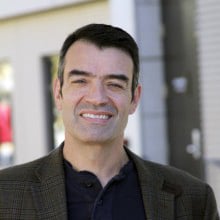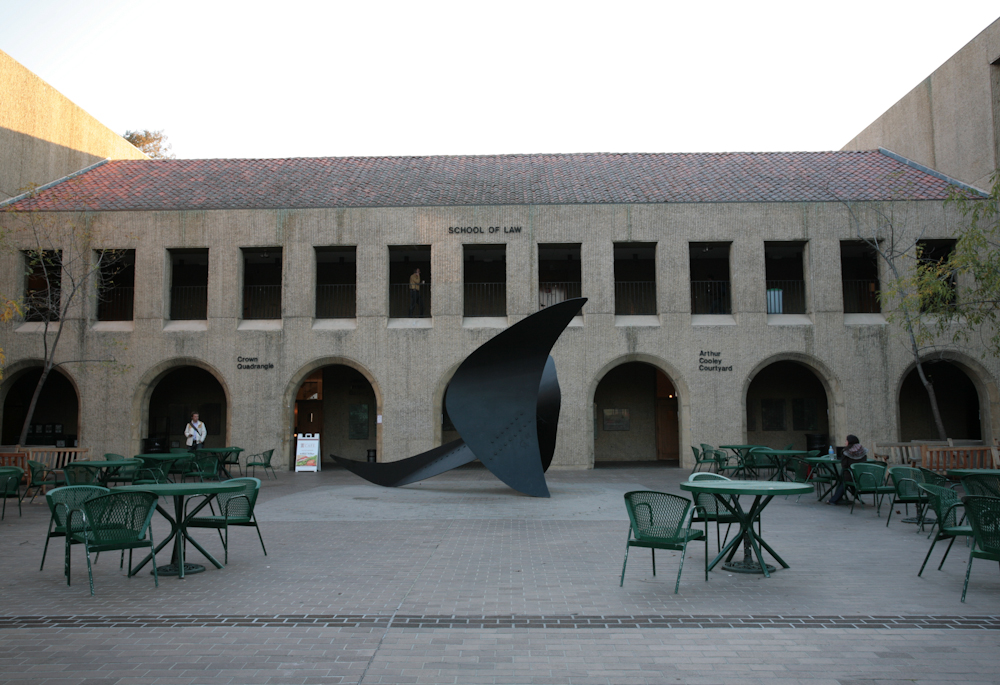For James Cavallaro, professor of law and director of the new Stanford Human Rights Center, turning the Law School into one of the nation’s preeminent forums for thoughtful debate on the world’s most pressing human rights issues is an effort well worth undertaking and one that’s already well underway.

He will have to fit his plans in between trips to Bolivia, where he and his students are building a case against former Bolivian President Gonzalo Sánchez de Lozada and former defense minister José Carlos Sánchez Berzaín for their role in massacring almost 70 unarmed citizens in 2003.
After all, Cavallaro is also the founder and director of Stanford’s International Human Rights and Conflict Resolution Clinic, which teaches students human rights law by having them represent real victims and which is, according to Cavallaro, “the best clinic in the country.”
Despite the relative youth of Stanford’s human rights programs — the Clinic began when Cavallaro came to Stanford Law School from Harvard in 2011, and the Center was announced on Feb. 20 — Cavallaro said he doesn’t feel it will be long before they rank above the comparable offerings at the nation’s other top law schools.
While that assertion may seem bold, Cavallaro also has the experience to support his projections. At Harvard Law School, he led both the academic side of Harvard’s Human Rights Program — the equivalent of Stanford’s Human Rights Center — and the clinical side — the equivalent of Stanford’s International Human Rights and Conflict Resolution Clinic.
According to his former Harvard colleagues and current co-directors of Harvard’s Human Rights Program Gerald Neuman and Tyler Giannini, Cavallaro will be an excellent leader of Stanford’s new Center while continuing to direct the Clinic.
“I think he was a splendid choice for Stanford,” Neuman said. “He’s a very gifted, dedicated and enthusiastic advocate and teacher of advocates. I think he’ll do a splendid job.”
“Jim will be terrific. In the time since we started the Human Rights Program here at Harvard 30 years ago, we’ve been gratified to see other schools jump in to expand human rights opportunities nationwide,” Giannini wrote in a statement to The Daily. “Our three faculty along with our team of attorneys and fellows look forward to exciting collaborations with Jim and the new Center.”
Cavallaro said that the Center, which will have a more reflective role in examining human rights, and the Clinic, which deals with human rights issues more actively and tangibly, will collaborate closely and ultimately produce a far more productive and effective joint program.
“What we hope to do is develop a center than can ask hard questions and be critical and thoughtful and theoretical, but also be very informed by practice,” he said. “We want those two sides to complement each other in these kinds of events that we have.
The Clinic: teaching advocacy by doing advocacy
According to Cavallaro, the Clinic is not just the nation’s best but is also “unique among top law schools,” set apart by its intensiveness.
Unlike students at peer institutions, Stanford law students take no other classes when they spend a quarter in the Clinic, resulting in an immersive learning experience.
“They have, pretty much, no other commitments, so they’re full time in the clinic. It makes it a very intense experience,” Cavallaro said. “It’s particularly beneficial for international human rights because most of our work is overseas, and so we want to be able to take students for one, two, three weeks…to research and document, and to speak with victims and witnesses.”
This unique clinical experience, he said, would be impossible if it weren’t for the extensive funding Stanford is capable of providing.
“There’s no, ‘Oh, we can only go on one trip, we have a budget,’” he said. “We have the resources to do what we need to make sure that the students are getting absolutely the best legal training that they can get.”
According to Neuman, that training is critical. He argued that while clinics across the nation do important work combating human rights violations in the present, one of their most significant roles is preparing the leading activists of tomorrow.
“Human rights clinics, in the work that they do…are essential in the training of qualified human rights advocates who will have careers helping to make a difference,” he said, adding that these clinics allow professors to “teach students in human rights advocacy by doing human rights advocacy.”
The Center’s reflective perspective
Though the Clinic may be among nation’s best, Cavallaro argued that activist teaching and learning is only one component of an elite human rights program.
“If you look at the top law schools in the country…all of them have very robust human rights programs, and they generally will have both the clinical component and a more reflective component,” he said, identifying the new Center as the latter.
Cavallaro said that the Center will offer a more academic take on human rights issues through a collection of “speaker series, conferences, round tables and events that lead to publications.”
“In other words, it’s a space for critical intellectual engagement in…human rights,” he said.
This critical engagement is crucial, according to Neuman, but may be lost in the frantic nature of clinical advocacy.
“Speaking as an academic, I would put a lot of value on the reflective study and criticism rather than the unreflective participation in the human rights field,” he said. “I don’t mean to say that reflection doesn’t take place in clinics, [but] there’s an opportunity for more concentrated, systematic examination of the field in the academic way…and also the production of scholarship that shares with the world the reflections.”
“As practitioners you’re often too busy trying to get your work done to take a step back and reflect on broader questions,” Cavallaro agreed.
Stanford’s Center will commence its programming with a yearlong speaker series titled “The Future of Human Rights.” Executive Director of Human Rights Watch Ken Roth — whom Cavallaro called a “very sharp, thoughtful, extremely well informed professional” — will give the first lecture on April 2. Other prominent speakers slated for the coming months include Columbia University Professor of Government Mahmood Mamdani, Executive Director of the U.S. Human Rights Network Ejim Dike and Jenny Martinez, Warren Christopher Professor in the Practice of International Law and Diplomacy.
The speaker series will be open to the general public as part of Cavallaro’s efforts to make the Center accessible to more than just the law school and its students.
“We hope to reach out not just to the law school but to the entire Stanford community and even beyond that,” he said. “We want the center to be a reference both to Stanford and beyond in terms of thinking hard about the difficult issues in human rights.”
Ultimately, it is the interaction and collaboration between the Clinic and the Center that will bring Stanford’s human rights program to the frontier of the national debate, according to Cavallaro.
“We want to be on the forefront of the questions and issues that are in the debate, and we want to do that in a way that both is informed by hard, critical thinking of theorists, but also by the practical experience of people and organizations that are involved in intensive advocacy of human rights,” he said.
